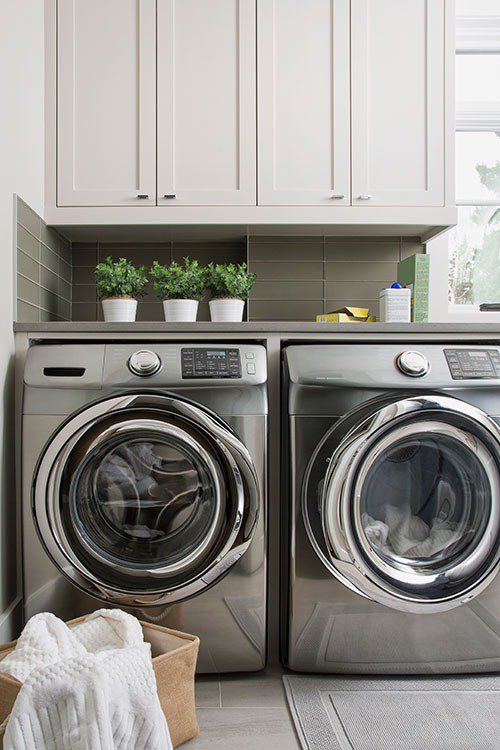Introducing regulatory compliance flexibility could reduce consumer prices for appliances and compliance costs for manufacturers, as well as increase choices in the market while achieving important efficiency gains.

The energy crises of the 1970s spurred major shifts in federal policy aimed at promoting energy security and conservation across the US economy. Today, appliances and equipment continue to be regulated under minimum energy efficiency standards set by the US Department of Energy (DOE). In recent years, the regulatory scope for these standards has expanded to target carbon dioxide and other emissions that contribute to climate change. First implemented under the Energy Policy and Conservation Act of 1975, the standards are scheduled for review every six years under a subsequent 1987 law. As DOE looks ahead to its next assessment phase, the agency is considering introducing market-based flexibility mechanisms, such as tradable performance standards or “feebate” approaches.
Adding flexibility to the regulations could reduce compliance costs for manufacturers, lower appliance prices for consumers, and increase choices in the market while achieving important efficiency gains. Late last year, DOE’s Office of Energy Efficiency and Renewable Energy issued a request for information about what types of flexibility mechanisms among the relevant options are best suited for the job. We submitted comments to DOE and further distill them here to help add insight.
Current Design Obstacles and the Benefits of Flexibility
The current system sets minimum requirements for the energy efficiency of appliances in various categories, but this inflexible approach is challenged by economic inefficiencies. In particular, fixed standards incentivize firms to meet the minimum level required for compliance but not to exceed it. No reward is offered under the standards for energy efficiency performance beyond the minimum, even if this could save energy at low cost. It’s true that appliances can be rewarded with an ENERGY STAR label if their energy efficiency performance is 20 percent better than the minimum level (and some states offer incentive payments for the purchase of ENERGY STAR appliances)—but this is not a design feature built into the standards.
This minimum threshold approach can result in the “bunching” of appliances right above the standard cutoff level. Essentially, this means that the marginal cost of reducing energy use across different appliance models may vary significantly—indicating that the same level of average energy efficiency for the fleet of appliances could be achieved at a lower cost with the help of flexible standards. In other words, it may be relatively inexpensive for a firm to improve the energy efficiency of one refrigerator model beyond what’s required. But with no reward for this incremental effort, manufacturers have no incentive to exceed the minimum. Conversely, it may be costlier for manufacturers to produce other refrigerator models in compliance with the common specific standard level—which translates to higher prices for consumers.
Flexible energy efficiency standards for appliances could help achieve the same level of average efficiency across models at a lower cost.
Author
Both feebate approaches and credit trading provide flexibility for manufacturers that can help equalize incremental compliance costs across models as well as potentially reduce the overall costs of complying with the program. The benefits depend on varying characteristics of the appliance market, and on how any new flexibility mechanism is implemented under the standards. If new flexible standards are set to achieve the same stringency as the existing program, consumer prices for appliances could drop as manufacturers face lower regulatory costs. Appliance manufacturers may also choose to offer more models, as not every appliance would be required to meet the minimum standards. If the implementation of flexible standards coincides with a further tightening of the standard, we would see less of an increase in appliance prices and potentially a greater variety of models on the market than we see under the current inflexible regulatory approach.
Feebate Policies
Feebates offer a way to reward manufacturers for energy efficiency performance beyond the standard—and, if meeting the standard is too costly for the firm, a way for them to pay a fee for noncompliance. The fee and rebate are proportional for the level of under- or over-compliance, and these values are predefined, similar to a tax. Although feebates are not a popular policy option in the United States, other regions (including France and Ontario, Canada) have experience with this design in the context of fuel economy standards for vehicles.
Policy design that relies on feebates offers a major advantage over fixed standards by providing a clear, monetary incentive for manufacturers to improve the energy efficiency of their products. This clarity comes from transparency—the values of the fees and rebates and the levels at which they are assessed or offered are predefined and publicly available to all manufacturers. These values could be set one year at a time, or over many years to provide greater transparency and certainty into the future.

A political hurdle presents one disadvantage to using feebates: this option would likely require Congress to grant revenue-raising authority to the agency responsible for implementing the policy. Revenues raised by the fee could be used to fund rebates. However, designing a revenue-neutral feebate policy would be a challenge. The devil is in the details here: selecting a pivot point for where fees are assessed and rebates given, as well as the values for each, is complicated by the process. The total fees and rebates allocated over the course of a compliance period (typically a single model year) depend on product sales during that time. More likely than not, a feebate policy would collect excess fees or grant excess rebates in a given compliance period, and thus require provisions for what to do with any excess or how to fund a shortfall.
Feebate systems offer many benefits but can be politically challenging to implement because they will require additional statutory authority. Tradeable credit systems are able to add a similar level of flexibility without many of the same political complications.
Credit Trading Policies
Credit trading allows firms to demonstrate excess performance (i.e., greater energy efficiency for appliances and equipment than the standard would mandate), and then be rewarded with credits that can be traded across models, with other manufacturers, or potentially across appliances. In the United States, Corporate Average Fuel Economy (CAFE) standards for vehicles provide an example of the benefits offered by credit trading provisions. Over time, various options to earn and trade credits have been introduced under CAFE regulations to increase compliance flexibility. Car manufacturers are increasingly trading credits to reduce their compliance costs, indicating that these provisions do indeed bring benefits. These reduced regulatory costs are most likely passed on to consumers in the form of lower prices.

In designing a credit trading program for appliances, regulators should consider the scope for trading, with attention to two important dimensions: within or across firms, and within or across product types. A program with a wide scope would set a single energy efficiency standard for multiple appliances and allow trading across different appliances and across all firms in the market; a limited scope might set a standard for just one type of appliance and not allow trading across manufacturers. A broader scope for trading creates more potential gains from trade. For example, if improving the energy efficiency of water heaters is less expensive than doing so for refrigerators, a flexible standard that allows trading can achieve the same level of overall energy savings at a lower cost. But this type of flexibility can also introduce complications that can undermine program benefits.
One key challenge in designing a tradeable credit system is accurately estimating the lifetime energy consumption of an appliance. This estimation is necessary in order to convert energy savings from the standard into the same units across different appliances. This presents another issue, however: even for a single type of appliance (such as an air conditioner or heater), lifetime energy usage can vary substantially across consumers, making it hard to compare one type of appliance to others. An air conditioner in Arizona, for example, will use much more energy than one in Maine. The challenge of estimating lifetime usage becomes even more difficult when comparing across types of appliances. As a result, allowing for trading across appliance categories will make it harder to set the desired standard. It also introduces the potential to erode aggregate energy savings. For instance, if the lifetime usage of an air conditioner is underestimated and the lifetime usage of a refrigerator is overestimated, the manufacturer has the incentive to lower the price of the air conditioner relative to the refrigerator. Such a change could increase air conditioner sales and satisfy the tradeable standard—but it could also result in higher aggregate lifetime energy use across refrigerators and air conditioners, undermining the goal of the program. Due to some of the potential problems with expansive credit trading programs, limiting the scope of the standards to a single appliance category is advisable.
Challenges to Introducing Greater Program Flexibility
Under the current regulations, appliance manufactures need to verify that each model they offer complies with the minimum standard for energy efficiency. Under a flexible standard, firms would need to demonstrate compliance by reporting both total sales by model and estimated energy usage by model (depending on the form of the standard and the scope of credit trading, if allowed). Collecting these detailed data on appliance sales from manufacturers would add to the overall administrative cost of the program for both the appliance manufactures and DOE. The additional information would offer an advantage from a program design perspective, because it would provide more information on the market for appliances and equipment in the United States. However, that comes with administrative costs, potentially including higher costs associated with testing varying models from numerous manufacturers.
These considerations must be balanced against the benefits of the program. Beyond data collection, program administrators at DOE would then need to calculate (by category) average energy usage—which can become a nontrival exercise depending on the scope of the trading allowed.
A pilot program limited to one category of appliances offers a practical way to learn about the potential benefits of flexible energy efficiency standards.
Author
Adding flexibility to energy efficiency standards poses another implementation challenge for DOE, if it is to adopt such an approach. Doing so may not be consistent with the existing statute, which calls for a minimum energy conservation standard for appliances and equipment. If this legal requirement is binding, implementing greater flexibility would require action by Congress. One potential workaround might be for DOE to combine minimum energy efficiency standards (perhaps based on the existing levels) that would apply to all appliances in a particular category with the use of a more flexible mechanism to enable further increases in energy efficiency beyond the minimum requirement. This would also prevent any backsliding in the stringency of the standards, which is also prohibited by law. A combined approach would likely limit some of the benefits of flexibility discussed above.
Conclusion
Economic theory shows that flexibility in a program with minimum standards can improve outcomes, and the CAFE program has demonstrated this. A pilot program for a particular category of appliances that allows within-firm trading offers a practical way to learn about what benefits might be gained under flexible appliance energy efficiency standards. Firms could be allowed to opt in, depending on interest. A limited pilot would also allow for better understanding of the potential costs of more flexible standards—without the costs and risks associated with broad implementation. This strategy provides time for both companies and regulators to address any potential problems or complications. Once a pilot program is concluded and the impacts are better understood, more appliances could be brought under a flexible standards regime—or not, perhaps. The benefits of a system with flexible standards may be difficult to quantify beforehand. But that should not deter policymakers from considering this potentially promising approach to further US ambitions for greater energy conservation and security.









